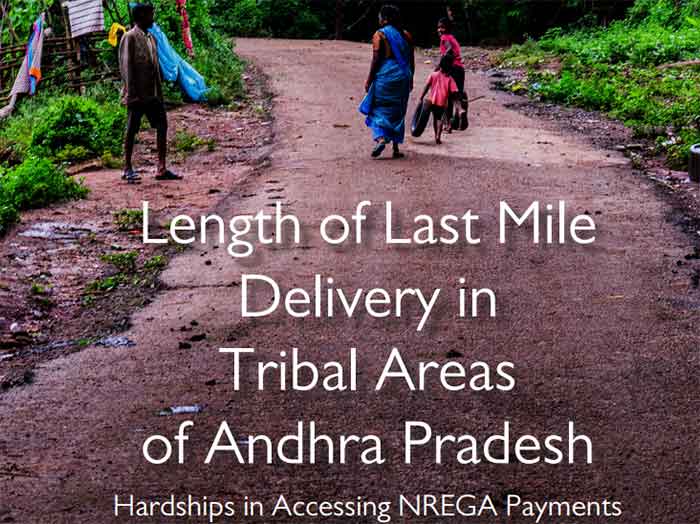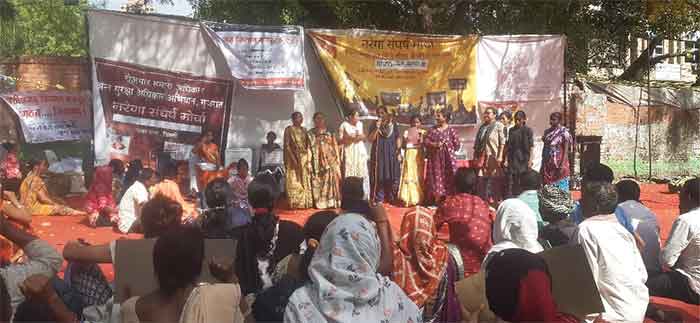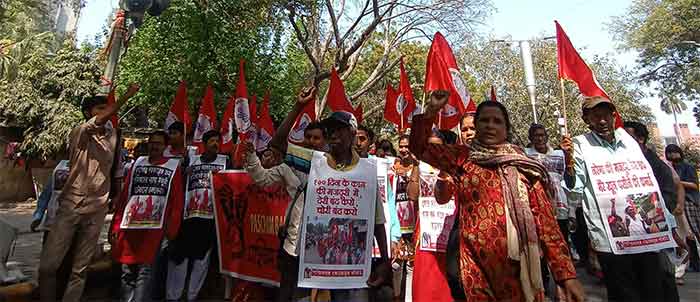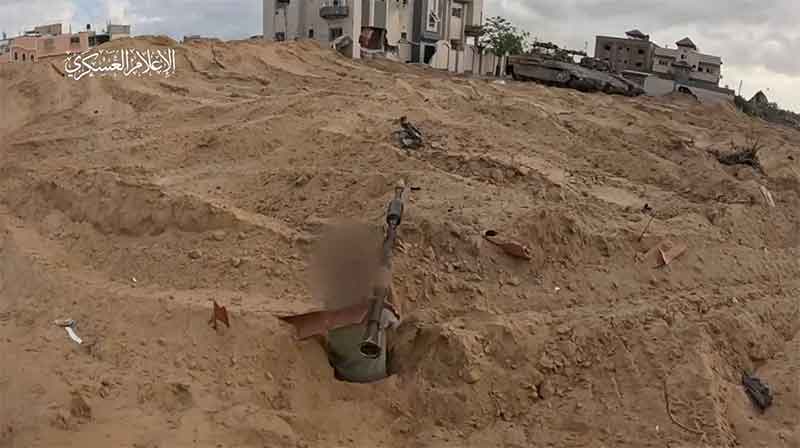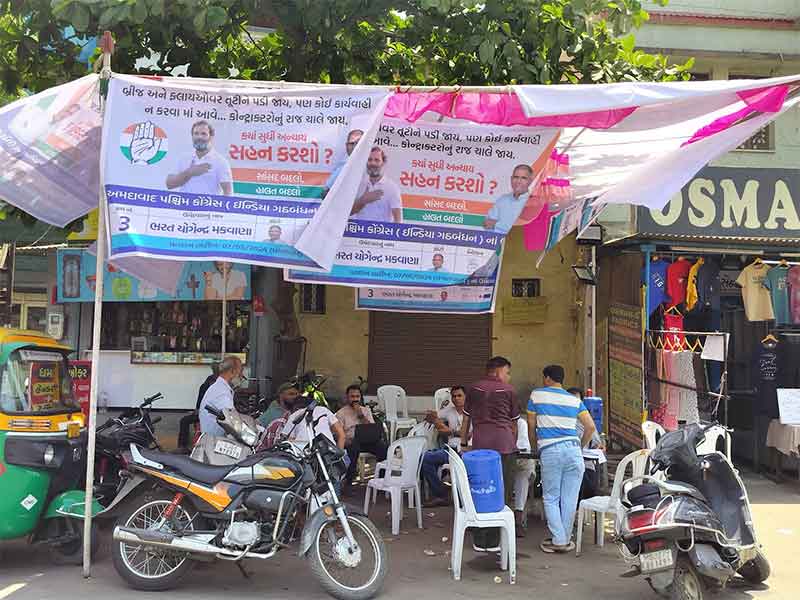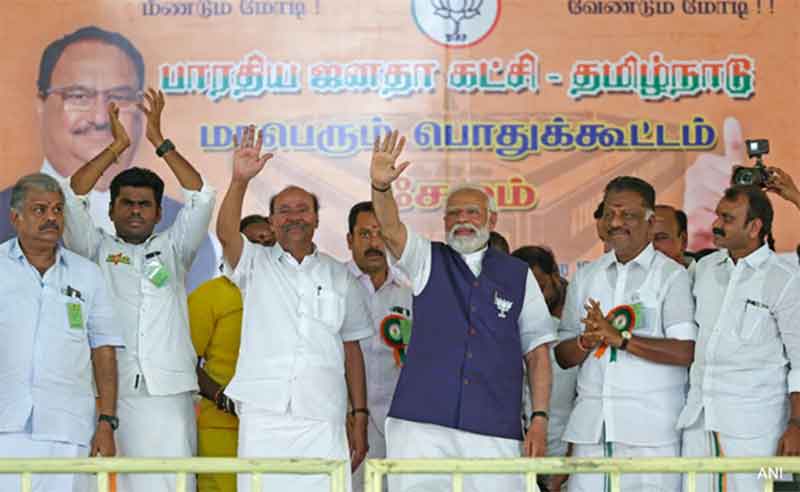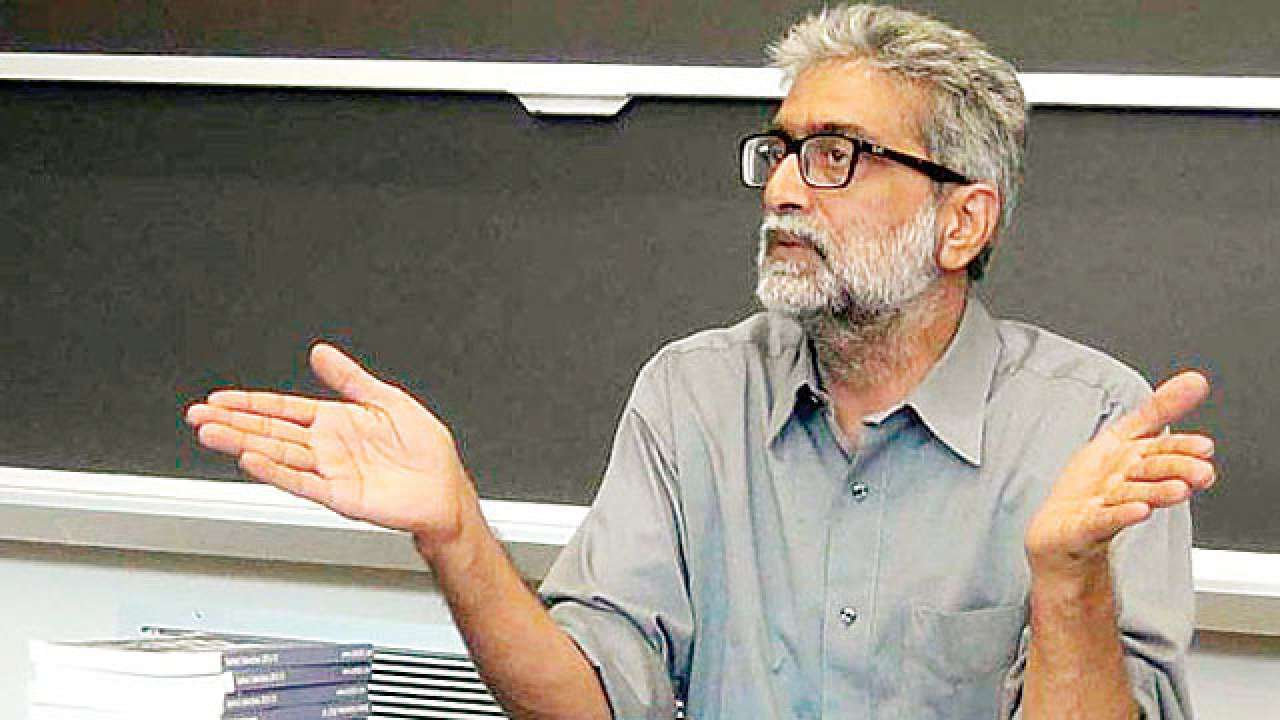
The Government of India’s official website shows that Jharkhand has failed terribly in MGNREGA implementation in 2018-19 while the country has seen a steady increase in work demands under the programme
Jharkhand has gone through a rough patch in MGNREGA implementation in the financial year 2018-19. The implementation of MGNREGA was almost standstill for nearly about 6 months during the financial year. The Gram panchayats Mukhias were on a one month long “ pen down” strike in demand of the fourteenth finance commission funds , followed by a strike called by the NREGA functionary union ( The programme officers and the frontline functionary’s) in demand of better remuneration and benefits for the staffs. This has vastly affected the implementation of MGNREGA works across the state and as a result the persondays generation figures took a huge blow. In addition to this, couple of occasions the wage payments were held up by the central government , each time for a period of more than one months. The delayed payments and frequent freezing of money has adversely impacted work at ground. The government will have to take full responsibility of the failure as they have constantly neglected the ground issues and allowed this situation where MGNREGA functioning was almost zero in the entire state during the strike called by the NREGA functionaries.
It is also important to mention that , state’s decentralized annual labour budget planning and Integrated watershed planning in 1272 villages of the same number of GPs under the CFT( Cluster facilitation Team) progaramme was also on hold for a long long time due to the absence of NREGA functionaries at the field. Once the strike was revoked and work resumed, the long exercises of labour budget planning and integrated watershed planning ran simultaneously for more than a month and absolutely negligible implementation work could be done during this phase as almost everyone including the Programme Officers were engaged in the processes of decentralized planning. The entire implementation in 2018-19 had taken a huge jolt due to frequent hazards in the implementing systems and other external issues. This has resulted in a very poor show on ground and the state could only achieve 76.6% of the approved persondays for the labour budget. This was even less than the results if the previous financial year( i.e 2017-18) which had achieved 85% of the total approved labour budget according to the official website of the Government Of India(GoI). The figures show that a 9 % decline in Person Days(PD) generation than the previous year which should be a major cause of concern. While several media reports and the official website of the central government have claimed that the demands for MGNREGA work was the maximum in 2018-19 compared to last few years; jharkhand’s poor show is a sign of failure of the state government. The rural households of Jharkhand, deprived of year round food security and availability of other employments, have significant dependence on MGNREGA works but due to the mismanaged implementation now a larger section of the workers have lost faith in it. While across the nation, in the absence of other employment opportunities people have opted for MGNREGA, in Jharkhand, the official figures show that the works have further dried up under the scheme.
19.08 lakhs workers from 14.45 lakh households have worked in MGNREGA in the year 2017-18 which too has a reduction this year. In 2018-19, 16.24 lakh workers from 12.73 lakh families have worked in the MGNREGA schemes. While the number of households worked declined by 12%, the number of workers have reduced by 15% than the previous year.
The total number of works taken up including the new one’s and spill over works declined by 11.43%, while total number of on-going works at the end of the year ahs seen a decrease of 35% in 2018-19 than the previous financial year. 402027 schemes have been closed in MIS in 2018-19 as compared to 284677 schemes in 2017-18. It is evident that as on-going work figure at the end of 2017-18 was far far higher than that of 2018-19; more number of works could be closed at the MIS this year. This has nothing to do with the overall work scenario in the state. Furthermore, the schemes are randomly closed on the MIS while the works are physically incomplete and the payments to the workers are yet to be made.
Also, the number of people who had completed 100 days of employment was 21000 less than the figures of previous year.
The most disturbing figure however is the participation of tribal people in the MGNREGA works. The ST% has further gone down 2% this year which makes it a total 12% decline from 38% to mere 26% in the last 4 years. More surprisingly the downfall is much more in the tribal dominated areas where the tribal participation remains generally high. The belts of santhal pargana and west singhbhum are the worst sufferers in this respect. In some of the blocks the reduction is in the range of 10-22% as compared to the last year which definitely goes to show that all is not well in MGNREGA. This will need a very detailed study, analysis and introspection. While there is no clear reason or evidence of tribal people prospering and leaving MGNREGA works, the declining figures only indicate disinterest among the workers and growing corruption in the areas.
However there are some encouraging figures in terms of participation of women in the MGNREGA works. The participation of women further increased by 2% and reached 39% which makes it a 7% increase in the last 4 years which is a good sign. This goes to show that more and more women are now participating in MGNREGA works which was not the case earlier. Also in terms of average employment provided to participating households, there has been no improvement this year. On an average 42 days of employment were provided to each of the job card holding families which had worked in MGNREGA in 2018-19. This figure was 41 in 2017-18. In the year 2015-16, which was also the year when Jharkhand had carried out it’s ambitious people’s planning campaign i.e Yojna Banao Abhiyan, the average days of employment provided per household was 52 and in the very next year however this figure declined to 40.6 but in the same year Jharkhand had observed a record 707 lakhs PD( personDays) generation which had even surpassed the approved labour budget of 700 lakhs PD for the said year. This was possible due to huge number of works opening post the Yojna Banao Abhiyan but the subsequent years have only recorded a steady decline in MGNREGA performances in the state.
Furthermore it is a matter of introspection that while Jharkhand has 23lakhs active job cards and 29lakhs active workers, why only 16 lakh workers from 12 Lakh families are working. Further one needs to delve into the fact why the rest 22 lakhs inactive job card holding families which have about 53 lakhs inactive workers are staying away from the MGNREGS works.
Debmalya Nandy is a social Worker




